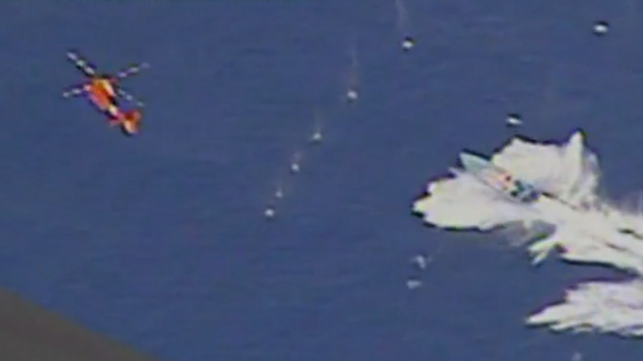Video: HITRON Team Brings Drug-Smuggling Boat to a Stop

On Monday, the U.S. Coast Guard Cutter Stratton returned to Alameda after a three-month counter-smuggling patrol in the Eastern Pacific.
Stratton's deployment began in late March as part of Southern Command's intensified effort to crack down on narcotics in the Caribbean and Eastern Pacific trafficking lanes. She set sail with a small unmanned aircraft system (sUAS), a sharpshooting Helicopter Interdiction Tactical Squadron (HITRON) aircrew and a Law Enforcement Detachment (LEDET) boarding team. Together, the crew detected and intercepted five suspected drug smuggling vessels, detained 14 suspected drug smugglers and seized over 6,000 pounds of cocaine worth an estimated $113 million.
On Sunday, Stratton delivered five suspects to federal authorities in San Diego for prosecution, then headed home for Alameda.
Compilation of Stratton's interdictions, March-June 2020, including one HITRON intercept (USCG)
"This deployment proved the resolve and capabilities of the U.S. Coast Guard and our interagency partners to keep pressure on transnational criminal networks, despite the challenges posed by operating during a global pandemic," said Capt. Bob Little, Stratton's commanding officer. "Our interoperability with the U.S. Navy allowed us to refuel and replenish at sea, avoiding the COVID-19 risks associated with port calls."
To preserve readiness, the Coast Guard has implemented strict COVID-19 safety measures. All servicemembers are required to follow enhanced sanitation and spacing procedures and wear proper personal protective equipment. Prior to deployment, all Coast Guard cutters conduct a 14-day at sea quarantine with regular medical monitoring.
The U.S. Coast Guard maintains an active presence in the busy drug transit zones of the Eastern Pacific Ocean and Caribbean Basin. During at-sea intercepts in international waters, a suspect vessel is generally located and tracked by allied, military or law enforcement personnel. The interdictions, including the boardings, are led and conducted by coastguardsmen.
The effort has yielded impressive results. In FY2017, the Coast Guard seized about 445,000 pounds of cocaine worth an estimated $6 billion, compared with about 36,000 pounds seized on shore by U.S. Customs and Border Protection.
